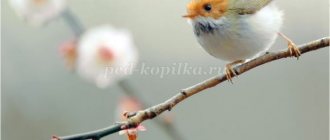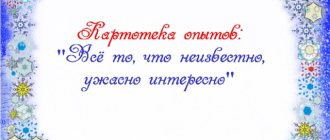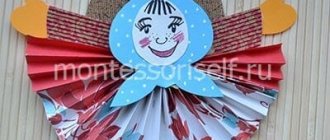Didactic game "Toys"
Dolls have existed for centuries; they are the best means of comprehensive development and socialization of children. Therefore, no kindergarten can do without a large play corner.
The purpose of the didactic game “Toys” is to get acquainted with different dolls and toys, to develop the ability to distinguish between them based on their main characteristics.
Tasks:
- formation of ideas about the types of toys, their size, geometric shape, color, number;
- enrichment of vocabulary on the topic “Children’s toys”;
- education of careful handling of toy objects;
- developing the ability to think logically and concentrate;
- improvement of finger motor skills, general coordination of movements, spatial orientation;
- development of speech skills, the ability to communicate, build a dialogue, listen to the interlocutor, answer questions, describe objects;
- development of imagination, visual perception.
Progress of the game
There are several options for exciting didactic games on the topic “Toys”.
Dollhouse
To play, you need to make a doll's house and pieces of furniture from scrap materials. The activity develops creative thinking, with its help children learn where what furniture should be in the home, learn to behave correctly in the house, and consolidate knowledge about sides and angles.
Pupils look at the doll's house, arrange the furniture in the way they think is most correct and comfortable. At the same time, they say, for example, “the closet should be in the left corner of the bedroom on the second floor,” let’s put the dining table in . The teacher simultaneously asks why the children chose this arrangement and why they think it is correct.
Dress up the doll
In the younger group, you can play a competitive game, take two or more dolls of the same size with similar clothes. There are as many players as there are dolls. The rest of the children cheer for their playing classmates.
The game, depending on the number of dolls, can be played in pairs, or in several rounds with elimination. The most dexterous one wins.
Fix the toy
The teacher prepares pictures depicting different toys. Cuts into several parts. The players’ task is to “fix” the image and connect its parts.
Find the shadow
To play the game, you need to prepare pictures depicting different toy objects, and pictures with similar silhouettes of these objects. The players' task is to make pairs of pictures.
Pick up a toy
The teacher shows the children geometric shapes - circle, oval, square, rectangle, triangle. During the didactic game, the players try to determine which toy is similar to each of the figures.
Who's wearing what?
For the didactic game “Toys” in the younger group, you need to take several dolls that differ in clothing and appearance. Having arranged them, the teacher asks “who has a red sundress,” “who has white socks,” “who has blond hair,” “who has blue eyes,” and so on. Children point to the corresponding dolls.
What disappeared
The following game is suitable for the average group of preschoolers: the teacher puts several toys on the table, the children remember them and close their eyes. The teacher removes one item. Children, opening their eyes, try to remember which object disappeared.
Who wants what?
The teacher puts three balls of different sizes, next to them puts three dolls (or three cars, or three teddy bears), also different in size. The task is to distribute objects in pairs and determine how they compare in size.
Similarly, you can distribute objects by color. For example, take red, yellow, blue balls and dolls in similar colored dresses.
Describe the toy
For playing in the older group, the teacher chooses several toys that differ in appearance. Children are divided into groups. Participants take turns naming a feature that characterizes the object chosen by their group.
For example:
- doll - beautiful, large, fair-haired, elegant, smiling, blue-eyed;
- teddy bear - teddy, brown, soft, kind, cute, cheerful;
- The machine is plastic, small, fast, smooth, shiny.
The group that names the most features wins. The game develops the ability to match adjectives to nouns.
Lesson summary "Toys" in the middle group
Summary of a lesson on speech development on the topic “Toys” in the middle group
Direct educational activities in the middle group
Topic: Toys.
Target:
practicing the ability to form adjectives; correlate nouns with adjectives in gender, number, case; Expansion and systematization of vocabulary; Dictionary: rubber, iron, glass, cardboard, plastic; Cultivate a caring, friendly attitude towards toys; teach children to put their toys away after themselves.
Equipment
: pictures of toys; a wonderful bag of toys; Mashenka doll; toys: bunny, spinning top, boat, kite, lantern, Teddy bear with a bow (for beauty).
Progress of direct educational activities
1. Organizational moment
(task for children).
Cutting pictures - make a picture from parts and name it. - Guys, what do you think we will talk about today? About toys. All toys are made from different materials. And today we will talk about what toys are made of and what they are like. 2. Studying new material.
Game: Wonderful bag.
Children take out toys by touch and name them; then determine the material from which they are made. - What did you get? - ball. -What is it made of? - made of rubber. - So what kind of ball is it? - rubber ball. Questions clarify the answers: rubber ball; glass ball; wooden cube; iron soldier; plastic scoop; cardboard fish. It is important to ensure that children give complete answers. Game: Let's help the doll Mashenka.
A sad doll Mashenka appears - Why is Mashenka so gloomy, so sad?
All her toys have run away because she doesn't know what they are made of. Let's help Mashenka. We need to find toys and name what they are made of and what they are. Children find toys in the play corner and return to the teacher. You need to name the toy and say what it is. (I have a fur hare; an iron spinning top; a blue ship; a beautiful Bear; a big snake). - Mashenka, do you remember? Tell me what the toys are made of? - Children, did Mashenka answer correctly? - Why isn’t it right? — She didn’t name the material, didn’t say what the toys were made of. - Let's remember once again what kind of toys Mashenka has and what they are made of. Children answer using relative adjectives. 3. Physical education minute.
- Guys, you have all been turned on with a key, you are wind-up dolls (the children walk around pretending to be wind-up dolls).
And now you are bunnies (children jump, imitating bunnies). And now you are bears (imitation). And now the foxes (imitation). And now all the balls are big and small; boys are big and girls are small balls; and they jump in different ways: big ones - high, small ones - lower (then they changed: the girls became big balls, and the boys - small ones). 4. Fixing the material.
Game: Toy Store.
Children look at toys on the shelf. Play activities: children go out and buy the toy they like. Condition: buy only toys made from the same material. First, they buy wooden toys. You need to name it, say what it is, what the toy is made of. — I bought a wooden spoon. I bought a wooden nesting doll. I bought a wooden horse. I bought a wooden cube. — The wooden toys are all gone, they’re all sold out. And now they sell rubber toys. Then plastic toys go on sale. Then iron ones. The teacher asks the children to help, clean up the store and place the toys on the shelves; the children arrange the toys, classifying them. - Well done, guys, you behaved well in the toy store today, played carefully with them, carefully placed the toys on the shelves. Reflection: Children, did you like the toy store? What toys were the most fun to play with? 5. Summary.
Closing conversation. — Guys, what other toys and what materials do you know? Yes, guys, today you learned a lot of interesting things about toys, you played happily and amicably with different toys. The teacher praises the children for their attentiveness and complete answers.





